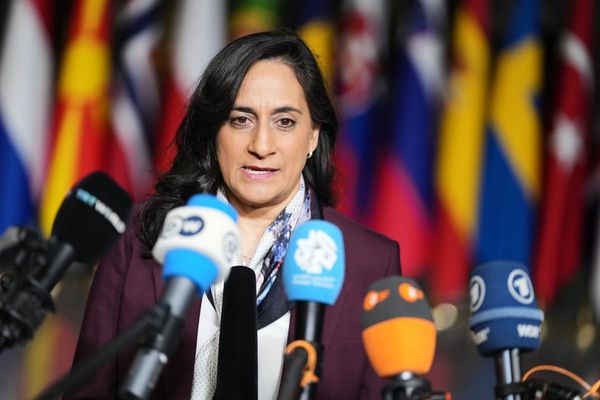
Sometimes I wonder what I’m watching when I travel the world to report on international sportscar racing. Not motor racing as I knew it, I'm prone to moan. It has become too controlled, too choreographed, if you like. I’m thinking Balance of Performance, strict limits on car development, convoluted safety car regulations and the like. But the Imola 6 Hours last Sunday went some way to restoring my faith in the branch of our sport that I’ve made my life.
The second round of the World Endurance Championship was a cracker. Not because of any real doubts that Ferrari was going to win the race, but on account of the uncertainty over who was going to take the finishing positions behind the best of the 499P Le Mans Hypercars. Was it going to be the yellow customer Ferrari, the other factory car, a Toyota, a BMW, an Alpine or a Porsche? We really didn’t know as the clock ticked down in an absorbing final hour.
For all the complaints about the BoP deciding the outcome of the races before the green flag has dropped, Imola showed that there is still plenty of room for strategic interplay that can mix things up. The fact that the AF Corse-run customer Ferrari crossed the line fourth, beaten by a BMW and an Alpine, proved that.
The FIA and the Automobile Club de l’Ouest, which combine to run the WEC, have told us that the BoP is never going to “compensate for the lack of optimisation in racing”, which they define as “strategy choices, driver form and tyre choices”. I’ve had a bit of a whinge about a Hypercar’s ability to look after its tyres being factored into the BoP for this season, but Imola proved there’s still scope for a team and drivers to make a difference.
BMW and Alpine took the final two podium positions courtesy of some creative strategy over the final two hours. The BMW M Hybrid LMDh was admittedly the second-fastest car around the Autodromo Enzo e Dino Ferrari at the weekend, but the #20 machine that came through to second didn’t look like a podium finisher as it trailed into the pits with its rear bodywork flapping in the breeze early in hour three. A clever fuel strategy allowed BMW and WRT to equal the best result for its LMDh.
The odds on the Alpine A424 LMDh taking home some silverware looked even longer before the start and then for much of the race. But the team pulled off a blinder, like BMW cutting the final portion of the race after the second safety car into two. The strategy worked a treat because a reduced fuel load allowed Mick Schumacher to make the most of the soft Michelin rubber on which the crew had gambled.

Actually, I’m going to correct that: it wasn’t a gamble because team-mate Jules Gounon had already completed a double on the alternate tyre available at Imola. The team knew the softs could work as the temperatures fell and also knew how to get the most out of them after Gounon’s run.
For all my euphoria post-Imola, I’m not forgetting that Ferrari was still very much in the ascendant on home ground as it made it two out of two in this year’s WEC. Its victory on Sunday wasn’t as dominant as the one first time out in Qatar in February. But it might have been. That’s led to some inevitable questioning of the BoP and the revised system by which it is calculated this year.
ANALYSIS: Why Ferrari's conservatism didn't deny it in an Imola WEC thriller
The advantage of the 499P over the chasing pack in qualifying was bigger in Italy than it was around the Losail International Circuit. Antonio Giovinazzi’s pole time was less than two tenths up on the second-placed BMW in Qatar; this time the gap between the Italian and the best of the rest in third, again the #15 BMW with Dries Vanthoor at the wheel, was a whopping nine tenths. That’s nowhere near the 100% equivalence promised by the FIA and the ACO!
If you stick to that part of the explanation of the BoP system, as it stands for 2025, we are all quite right to start banging a drum. But perhaps not if you take into account the nitty gritty of what was outlined in Qatar. The BoP is based, we were told, on the performance from the previous three races.
So here’s my take on what is always going to be a contentious subject. The BoP in Qatar was based on the final three races of 2024, the calculations for Imola on Qatar and last year’s Fuji and Bahrain races.
Ferrari wasn’t super-competitive at the back end of 2024 as it missed out on both the drivers’ and manufacturers’ crowns. It went away and set to work on improving its package: it has talked about a no-stone-unturned approach over the back end of last season and the winter. Clearly Ferrari has taken a step forward, and a significant one.

Is it so wrong that a manufacturer develops its machine within the strict confines of what is allowed in Hypercar, and then reaps the rewards? Excuse me for sounding like an old fuddy-duddy again, but that’s how motor racing used to work. Endeavour on the test track, in the wind tunnel, in the drawing office or wherever converting into performance on the race track used to be the name of the game.
Toyota’s lack of performance this year maybe backs up my hypothesis. The GR010 Hybrid LMH is the oldest and most developed machine in Hypercar, one that underwent major upgrades ahead of its second and third seasons. So it stands to reason that Ferrari, with a car entering a third rather than fifth season, had more to gain than Toyota through a winter’s worth of development.
No one has been idle over the winter, of course. All the Hypercar manufacturers are pushing to the limit to find the last tenth or two. Has Ferrari really found more than everyone else? If the BoP is doing its job as prescribed, then I would say it has to be a yes.
So with a three-race rolling average, Ferrari’s advantage is going to slowly work its way out. That said, the 499P should have had less of a margin at Imola given that its performance in Qatar was factored into last weekend’s BoP. It didn’t turn out like that in qualifying, though perhaps it did during the race given that it only finished eight seconds up the road from BMW. That’s a difficult one to judge given all the strategic variations on display over the six hours. But I’m sure the winning Ferrari would have been further ahead had we ended up with what I might call a more straightforward race.
In theory, the chasing pack should be nearer again at Spa next month when Imola is taken into account in the BoP calculations. Just don’t ask me about the Le Mans 24 Hours. The unique characteristics of the 8.47-mile Circuit de la Sarthe mean the centrepiece round of the WEC in June has a specific BoP. It’s not based on the three-race rolling average.
But come Interlagos in July, Ferrari’s winter gains should have been mitigated by the BoP. Whether that is my conclusion on what has happened so far in the WEC this year or just a hope, I’m not quite sure. Nor am I bold enough to try to predict whether Ferrari is going to be out front on its own at Spa, but I will stick my neck out and say we’re in for another great WEC race.
Some fickle Ardennes weather and, I’m sure, a safety car or two should shake things up a bit on the majestic Circuit de Spa-Francorchamps. Expect some more left-field strategic thinking on the pitwall.








